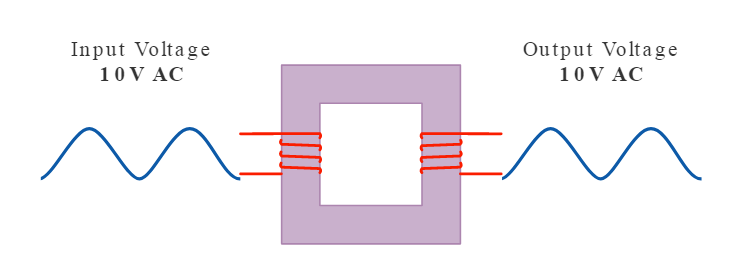Basic of Transformer
A transformer is a static device which converts the alternating current energy from one voltage level to another voltage level.
Why is the Transformer a static device?
Unlike motor or generator where motion is required to generate output, but in the case of transformer both the winding i.e primary winding and secondary winding are fixed therefore a transformer is called a static.

Transformer Working
A transformer operates on the principle of mutual inductance, between two coils. Mutual induction is the process by which a coil magnetically induces a voltage into another coil located in close proximity to it. Transformers get their name from the fact that they “transform” one voltage level to another voltage level.
A single phase transformer basically consists of two electrical coils of wire, one called the “Primary Winding” and another called the “Secondary Winding”.
The primary winding is energized by the sinusoidal voltage or AC.
The secondary winding is connected to the load( output is taken from the secondary winding).
The alternating current in primary winding generates an alternating flux (Φ) in the core. The secondary winding is linked by most of the flux and e.m.f are induced in these two winding. Energy is transferred from primary circuit to the secondary circuit by the magnetic field medium.

Types of transformers
Transformers are classified into the different category such as on the basis of their voltage level, core used, types of cooling etc.
On the basis of their construction:-
On the basis of their construction transformer are divided mainly into two parts:
Core type Transformer
Shell type Transformer
Difference between Core type and shell type transformers
On the basis of their Voltage conversion
On the basis of their voltage conversion transformers can be classified into 2 types
- Step-up Transformer
- Step-down Transformer
Step up Transformer
When the secondary voltage is greater than the primary voltage it is called as a step-up transformer. The function of the step-up transformer is to increase the voltage level. On a step-up transformer, there are more turns on the secondary coil than the primary coil.

Step down Transformer
When the primary voltage is greater than the secondary voltage it is called as step-down transformers.
The function of Step- down transformers are designed to reduce electrical voltage. A step-down transformer has fewer turns on the secondary coil that the primary coil.




